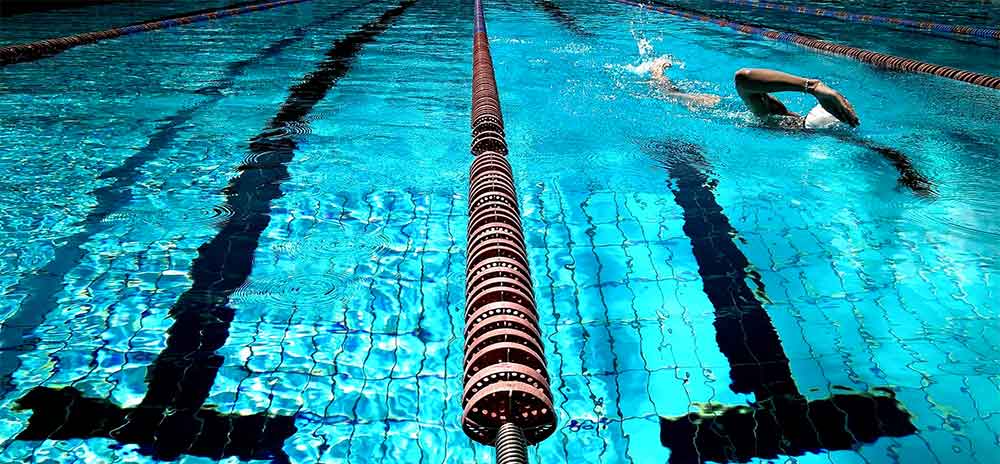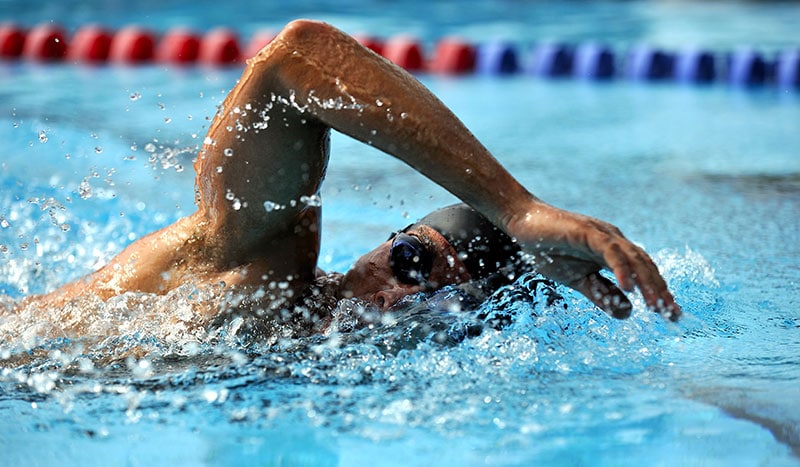So, you’ve taken the plunge into swim training, and now you’re all about nailing that mile time, right?
You’re probably floating there in the pool, thinking, “What’s the deal with a good one-mile freestyle time? Am I like a water-bound superhero, or more of a leisurely turtle?”
Fear not, water warrior, whether you’re just dipping your toes in or you’ve been slicing through the pool like a human torpedo, we’ve crunched some numbers to give you the lowdown.
Ready to find out if you’re more of a speedboat, a sailboat, or, well, adorably paddling along at your own pace?
Let’s wade into the data and see where you splash down on the swim spectrum!
Factors That Affect Mile Swim Times

Unfortunately, there is no quick and short answer on how long it takes someone to swim one mile because there are too many factors at play here.
But we can give you some averages for various scenarios after we discuss those factors.
Things that affect mile swim times:
- your stamina
- your swimming technique
- are you in open water?
- the water temperature
- your age & athletic ability
You’ll get the fastest results in a swimming pool compared to open water (lake, ocean, river).
In swimming, a “swimming mile” is only 1650 yards instead of a true mile.
How Many Swimming Laps Are In One Mile?
If you’re going to be doing your swim training in a pool, then it helps to know what you’re working towards.
Technically, a mile equals 1760 yards and 1609.3 meters, but competitive swimmers call both 1650 yards and 1650 meters a “mile”.
Typically, most fitness facilities have a swimming pool that is either 25-meters in length or 50-meters in length.
Here’s how many laps you need in each pool to equal one 1650-meter swimming mile:
- In a 25-meter pool, one mile is 33 lengths, or 66 laps.
- In a 50-meter pool, one mile is 16.5 lengths, or 33 laps.
Keep in mind that a “lap” is defined as all the way down the pool, not down the pool and back.
And a “length” is what you call down the pool and back.
Since a swimming mile is not a true mile, this math can be confusing.
So, here’s how to calculate it using the size your swimming pool:
How you define a mile DIVIDED BY the length of your pool = number of times you need to swim once across the pool.
Example: 1650 meters/50 meter pool = 33 laps
But what if you want to swim a true mile?
Well, if you want to swim a mathematically-accurate mile and your pool is measured in yards, divide 1760 by the number of yards in your pool. If your pool is measured in meters, divide 1609.3 by the length.
Average One Mile Swim Times By Skill Level

Based on the speed of Olympic swimmers, the fastest time for swimming one mile is around 16 minutes.
With than in mind, an amateur swimming should expect to complete a mile in around 25-45 minutes.
For the beginner, expect a mile swim to take around 45 minutes on average.
The U.S. Masters Swimming website has a cool table on their website that is a fitness pace chart.
It’s something that you might want to bookmark for later reference. Remember, a swimming mile is 1650 yards or 1650 meters.
You can also track your time and pace with something like the Garmin Swim 2, which is a swimming smart watch.
It tracks your distance, pace, stroke count, stroke type and swimming efficiency.

You can order this swimming smartwatch online at Amazon for home delivery.
How Long Does It Take A Beginner To Be Able To Swim A Mile?
If you’re relatively new to swimming for fitness and and with the goal of swimming consecutively (no rest breaks) to one mile, then you might feel a bit discouraged about your progress.
Don’t worry if it seems like you’ll never be able to swim a mile without stopping, let alone a few laps in the pool with no breaks.
The truth is that everyone progresses at different levels.
For some beginners, especially those who are young and already in good cardio shape, it may only take two to three months to be able to swim one mile.
For other swimmers who are new only only to swimming but to cardio workouts of this caliber, it can take six months or longer to have the stamina to reach one mile without stopping for a rest.
How To Boost Your Stamina And Swim Faster
If you’re challenging yourself to get to that one-mile goal, then you might be looking for ways that you can do this quicker than the average person.
With a bit of work, persistence, and luck, you just might be able to make it happen – but take care that you don’t do anything stupid that results in an injury.
Do cardio and strength training outside of the pool. Work on boosting your arm and leg strength so that you can power through those strokes. And get in some cardio when it’s not strength training day.
Set yourself a goal of 500 yards each day for one week. Sure, you’ll have to take breaks, but really push yourself to achieve this goal each day. Maybe start with taking a break every 50 yards, and then every 100 yards, and so on.
Each week increase your daily goal by 100 to 200 yards. Yes this will be a challenge, but if you push yourself, then you can make it happen. Remember to take breaks when you need to but focus on the end goal.
Work on your breathing. There are some great breathing exercises that you can do to improve your performance.
Focus on your form in the water. Making sure that you’re doing your swimming with proper form is one of the easiest ways to improve your performance. Not only will you move through the water faster, but you’ll have lower injury incidences and reduce drag.
